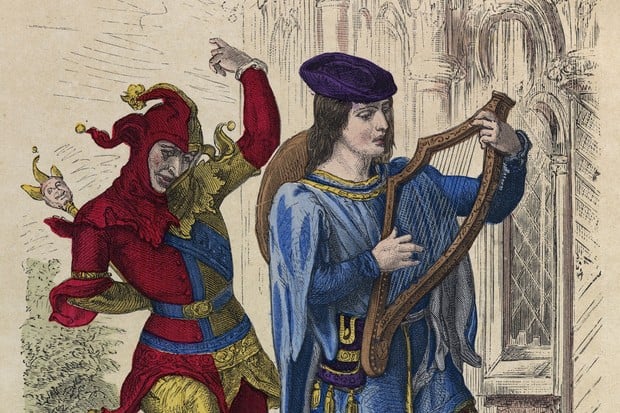When we take a look at photos of parties and gatherings in the middle ages, we’d notice that there are people dressed in funny, bright, and obscure costumes. Initially, we’d think they were just hired to entertain for the event, but the real store of court jesters is much darker than we think.
Wealthy families from the Middle Ages took in people who had mental illnesses or physical deformities. They kept them as court jesters or pets for their twisted amusement. They were not paid, just given food, clothes, and a spot to sleep on the floor.
What is a Court Jester?
A jester or a fool was a member of the household of a nobleman or royalty employed solely for entertainment. They were quite popular during the medieval eras.
The term jester originated from the French word jestour, which meant storyteller. They were given different names such as fol, disour, buffoon, and border as time passed. (Source: Online Etymology Dictionary)
What Was Life Like for a Court Jester?
Jesters are often pictured as the wise fool, running around, playing music, juggling, and telling jokes to keep guests at a party entertained. By the 11th and 12th century they were given the name minstrel, which meant little servant. They had a wider range of jobs as entertainers. They sang, tumbled, did magic, and more. Both men and women were employed as minstrels.
Most of the jesters or minstrels would be physically deformed or have some sort of mental illness that they did not thrive well in society. Wealthy families will take them in and basically treat them as pets by just giving them food, water, and shelter. They were never actually paid.
By the 12th century, the title of the follus or fool was used and mentioned in documents when describing jesters that have been awarded lands as payment for their services. A jester by the name of Roland le Pettour was given 30 acres of land by King Henry II when he retired. This was given to him under the condition that he returned to the royal court every Christmas Day. (Source: History Extra)
What Was The Political Significance of a Jester?
David Carlyon, a scholar, cast doubt on the concept of a daring political jester. He called historical takes apocryphal, saying that popular culture embraces a sentimental image of the clown.
Back then, Jesters could also give bad news to the King. The kind of news nobody would dare deliver. In the year 1340, when the French fleet was destroyed at the Battle of Sluys, the jester told King Philippe VI that the English sailors did not have the guts to jump overboard into the water like the brave Frenchmen. Of course, he meant this sarcastically. (Source: Fools are Everywhere: The Court Jester Around the World)
Are There Still Jesters Today?
Today, the jester is played in different versions. They are often seen in medieval reenactments, Renaissance fairs, or carnivals. Unlike back in the middle ages, they were not employed or living in a nobleman’s home, but pretended to be one for the sake of fun. (Source: Fen Vlaanderen)

Volledig de bal mis. Complete onwaarheid, gebrek aan inzicht van de realiteit!